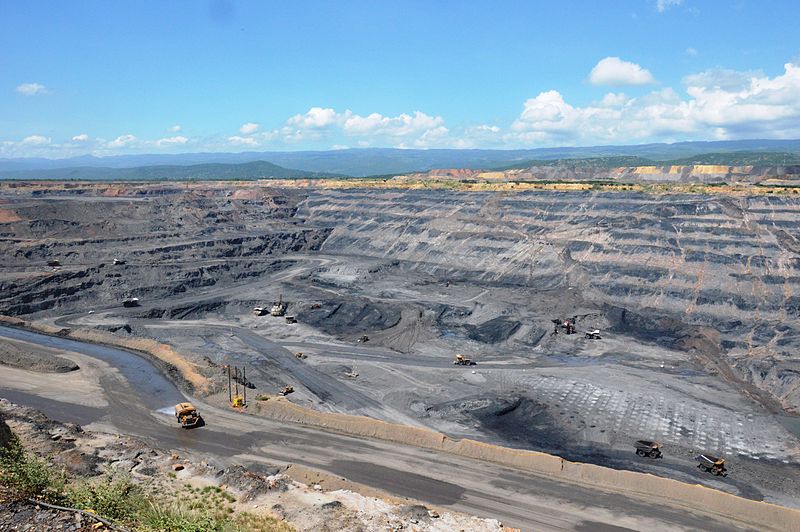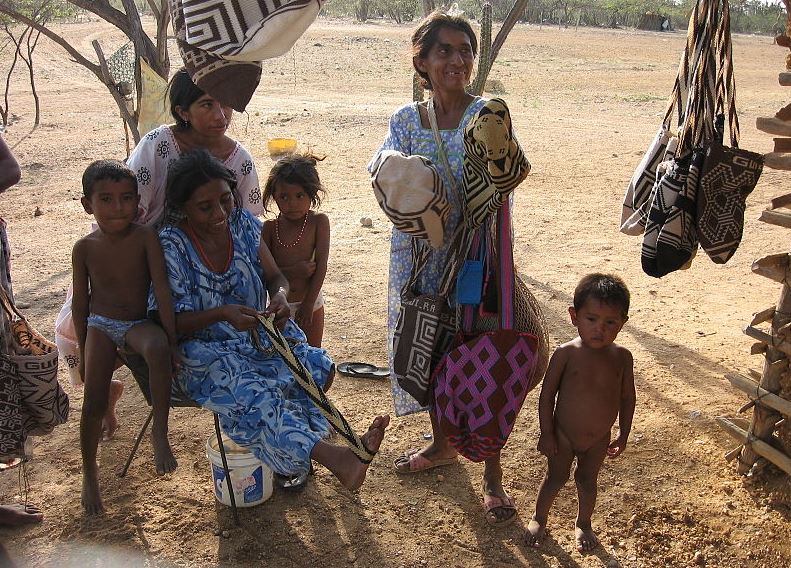
Campaigners based over 8000 km away from Colombia are voicing their concerns in their native Republic of Ireland, due to the country’s involvement in human rights abuses associated with Colombia’s Cerrejón mine.
The Cerrejón mine has occupied over 690 km of territory in the northeastern department of La Guajira since 1985. The mine produced 31.9 million tonnes of coal in 2017, 31.7 million of which was exported to countries such as the Republic of Ireland.
However, the company that prides itself on “responsible mining,” and claims to be “allied for the progress of La Guajira,” has long-since been accused of various human rights violations that continue to affect communities local to the area, many of which are of indigenous Wayuu and Afro-Colombian descent.
According to British environmental journal Ecologist, as of 2017, the mine has displaced around 35 communities, with just five given the opportunity to resettle.
“In La Guajira, large-scale mining has led to the breakdown of the social fabric, militarisation and serious implications for the health and safety of communities and their representatives,” policy advisors from the Latin America Solidarity Centre (LASC), which campaigns for solidarity and cultural action between the Republic of Ireland and Latin America, told The Bogotá Post.
Complaints from the surrounding populations revolve largely around the noise and shaking of the ground generated from controlled explosions that occur within the mine, which affect their lives on a daily basis.
Local residents have also expressed their discontent about the strong smell of sulphur and burning carbon that the mine generates, as well as the dust that fills the air, causing both respiratory and dermatological problems.
Speaking to peace-focused content platform PACIFISTA in 2017, one woman described the severe effects the environmental conditions were having on her son, who was eight months old at the time.
“He had a high fever and was coughing like he was drowning,” she told the platform. Several years later and the young boy is still suffering the effects, “he can’t run or shout, and he coughs throughout the night.”

However, humans are not the only ones affected by the mine. Its effect on the region’s water and ecosystems is also a grievance being highlighted by the local population, who have often protested these conditions over the years.
Their levels of frustration recently culminated in a protest whereby around 50 residents of the Roche community, who have been forced away from their ancestral land, staged a non-violent occupation of the mining area in the municipality of Hatonuevo on January 15 this year, with permission from the government of La Guajira.
According to a statement released by the mine, mining operations were suspended as a result of the protest and profits affected. “Unfortunately it was not possible to come to an agreement [with the community], despite several meetings that had a total duration of one year, eight months,” read the communiqué.
However, when questioned on their response to the protest by The Bogotá Post, communication representatives from the Cerrejón mine claimed that they had “met with government officials in order to attend to this situation and [they] hope to be able to move forward again with conversations that…allow [them] to build collaborative solutions framed by the steps defined by the Interior Ministry.”
This most recent demonstration has reminded activists from the Republic of Ireland of their country’s governmental involvement in the mine’s operation, as they continue to highlight the contradictions between the government ’s stance and their funding of Colombia’s UN Human Rights Commission.
Electricity Supply Board (ESB), the Irish utility company importing coal from the Cerrejón mine to Moneypoint Power Station, is 95% state-owned, LASC pointed out. Besides this, LASC highlighted that beyond Irish state procurement of coal in Colombia, the headquarters of the mine’s main coal marketer, CMC, are also based in Ireland.
Despite some inconsistencies in government responses to the subject, LASC told us that, “as the main shareholders in the ESB, the government is aware of and has publicly acknowledged the human rights abuses inherent in Cerrejón’s extraction of coal in La Guajira.” One subject that has not been commented on, however, is the location of CMC’s main offices in Dublin.
“In cases like La Guajira…there needs to be insurance and comprehensive investigation to ensure that intimidation and dispossession of land from vulnerable communities does not occur, and when they do occur there needs to be accountability and access to justice for communities, otherwise any good work being done towards advancing the peace process will be meaningless,” LASC commented.
When The Bogotá Post asked Cerrejón to comment on accusations of human rights abuses, the mine responded, “we carry out our operation with total adherence to the Colombian law, and similarly we align our behaviour complying with standards focused on prevention, mitigation and compensation for impacts that mining activities can generate in communities within our area of influence.”
Attempts are, nevertheless, being made by the government of the Republic of Ireland to improve its stance on the issue. The Irish department of Foreign Affairs and Trade is in the process of opening an embassy in Bogotá, due to be inaugurated this year, in an attempt for a better monitoring of the impacts of the mine.
Addressing the current situation is also of special importance given the long-standing relationship between Colombia and the Republic of Ireland. Having learnt from previous experience, the European country currently contributes to the peacebuilding process through partners such as Christian Aid, for example.
The importance of dealing accurately with the delicate issue of land and natural resources, which have – as LASC points out – “always been at the centre of the Colombian conflict” must not be underestimated, especially during the post-conflict era.
If not managed properly, “the expansion of agro industries and mining to new territories causes forced displacement and land grabs…All of this has the potential to deepen the conflict further,” LASC warned.




